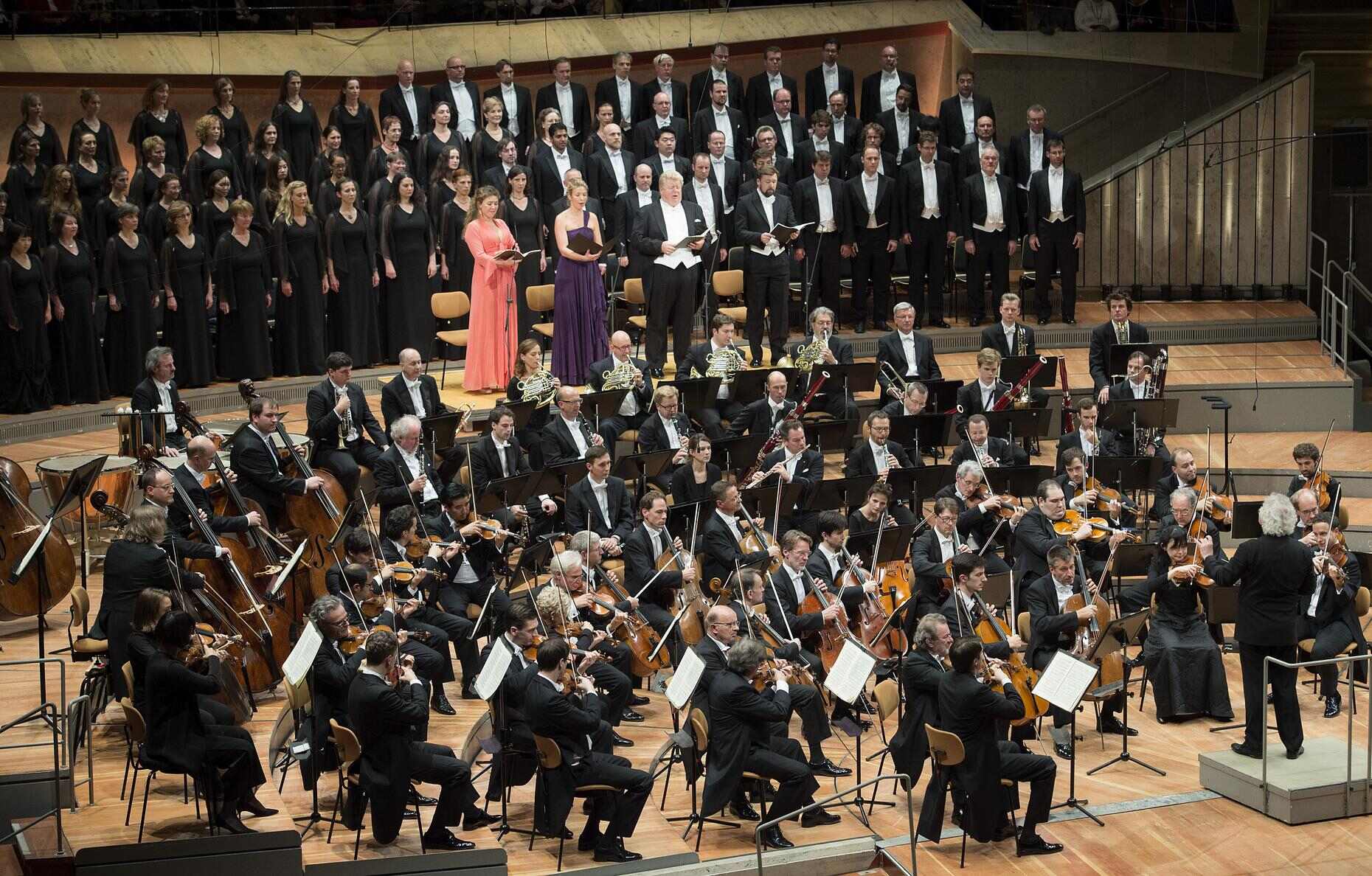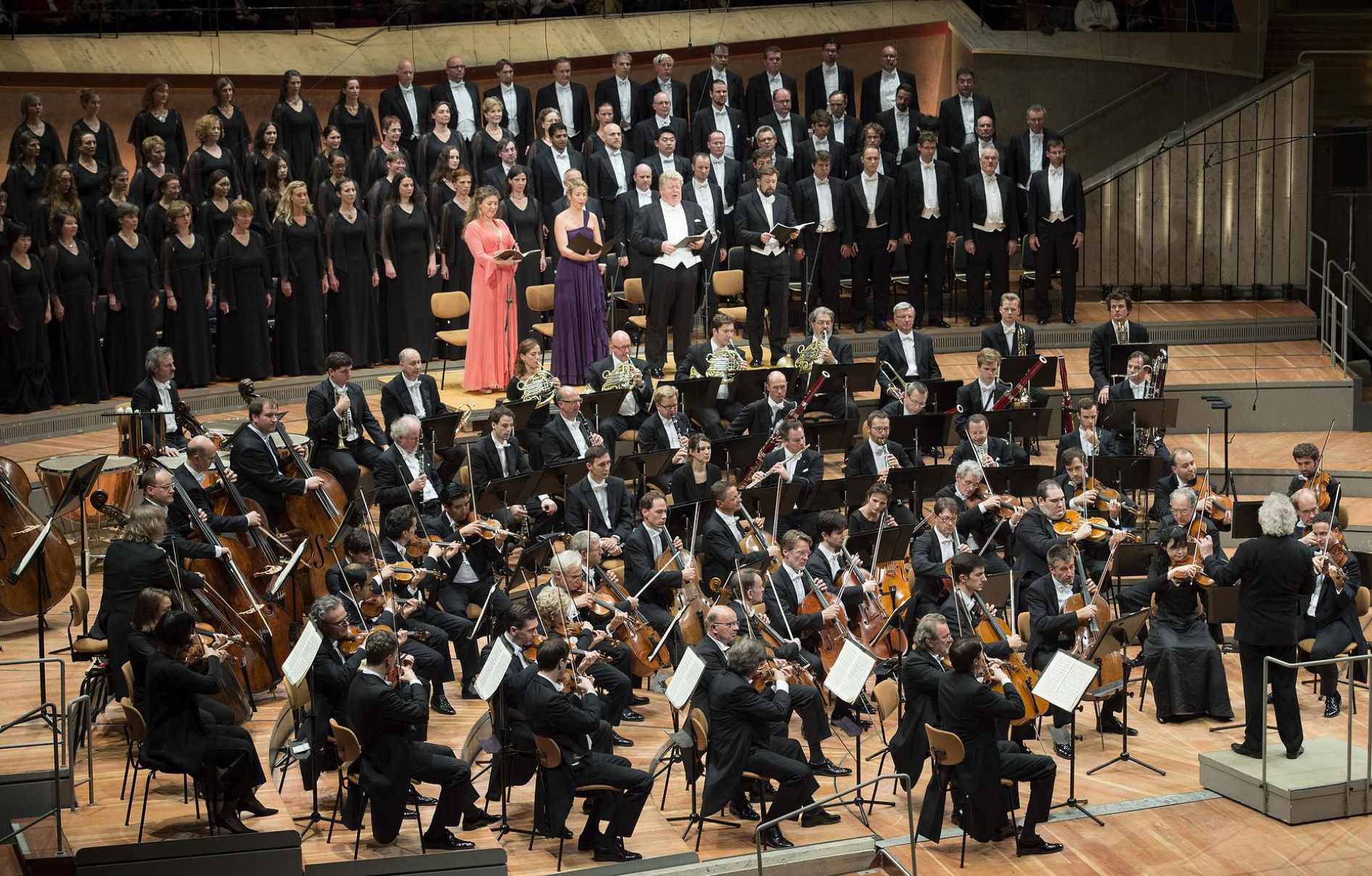Home>Genres>Rock>What Is The Difference Between Pop And Rock Music


Rock
What Is The Difference Between Pop And Rock Music
Modified: February 15, 2024
Discover the key distinctions between pop and rock music, including their unique styles, influences, and cultural significance. Explore the evolution of rock and its enduring impact on popular music.
(Many of the links in this article redirect to a specific reviewed product. Your purchase of these products through affiliate links helps to generate commission for AudioLover.com, at no extra cost. Learn more)
Table of Contents
- Introduction
- Definition of Pop Music
- Definition of Rock Music
- Musical Characteristics of Pop Music
- Musical Characteristics of Rock Music
- Historical Development of Pop Music
- Historical Development of Rock Music
- Influence of Pop Music on Society
- Influence of Rock Music on Society
- Comparison of Pop and Rock Music
- Conclusion
Introduction
Music is a universal language that has the power to uplift, inspire, and connect people from different backgrounds and cultures. Within the vast landscape of music genres, two prominent styles that have dominated the mainstream are pop and rock music. While both genres enjoy immense popularity, they possess distinct characteristics that set them apart.
Pop music, characterized by catchy melodies and relatable lyrics, has become synonymous with mainstream success. It dominates radio airwaves, charts, and music streaming platforms, capturing the hearts of millions around the world. On the other hand, rock music, with its raw energy, powerful guitar riffs, and rebellious attitude, has maintained a loyal following and continues to influence generations of music enthusiasts.
In this article, we will delve into the differences between pop and rock music, exploring their definitions, musical characteristics, historical developments, and the impact they have on society. By understanding these genres and their unique nuances, we can gain a deeper appreciation for the rich tapestry of musical expression that permeates our lives.
Definition of Pop Music
Pop music, short for popular music, is a genre that encompasses a wide range of styles and influences. It is specifically designed to appeal to a mass audience and has a commercial appeal. Pop music often incorporates catchy melodies, simple chord progressions, and memorable hooks that are easily hummable and resonate with listeners.
One defining characteristic of pop music is its emphasis on mainstream accessibility. Pop songs typically have a strong emphasis on vocals and are accompanied by a polished production style. The lyrics often revolve around themes of love, relationships, and personal experiences, making them relatable to a broad audience.
Pop music has its roots in various genres such as R&B, dance, soul, and rock and roll. It has evolved over the years, adapting to changing musical trends and embracing elements from different genres to create a hybrid sound. Pop artists are known for their ability to connect with listeners on an emotional level and create songs that are instantly recognizable and widely played on radio stations and streaming platforms.
While pop music is often associated with mainstream success and commercial appeal, it is important to note that it is not limited to a specific sound or formula. It continues to evolve and encompass a wide variety of musical styles, from bubblegum pop and electropop to indie pop and synth-pop.
In summary, pop music is a genre that prioritizes wide appeal, catchy melodies, and relatable lyrics. It is designed to resonate with a mass audience and has a strong commercial presence in popular culture. Pop artists continuously push the boundaries of the genre, creating music that is both accessible and creatively innovative.
Definition of Rock Music
Rock music is a genre known for its heavy use of guitars, powerful vocals, and an energetic and rebellious spirit. It emerged in the mid-20th century as a fusion of various musical influences, including blues, country, and rhythm and blues. Rock music is characterized by its distinctive sound, featuring amplified instruments, driving rhythms, and a strong emphasis on live performances.
One of the defining aspects of rock music is its raw and aggressive nature. It often explores themes of personal freedom, social commentary, and rebellion against the status quo. The lyrics of rock songs can range from introspective and poetic to politically charged and confrontational.
The guitar plays a central role in rock music, with iconic riffs and solos becoming synonymous with the genre. Rock songs are known for their powerful vocal performances, showcasing an array of vocal styles, from bluesy growls to soaring melodies. The rhythm section, usually consisting of bass guitar and drums, creates a foundation of driving beats and grooves that contribute to the overall energy of the music.
Rock music has evolved over the decades, spawning various subgenres such as classic rock, hard rock, punk rock, alternative rock, and many more. Each subgenre has its distinct characteristics and influences, allowing for a vast range of musical expression within the rock genre.
Rock music has had a significant impact on popular culture, influencing fashion, attitudes, and social movements. It has acted as a voice for generations of youth, expressing their frustrations, aspirations, and desire for change. Rock concerts and festivals have become cultural phenomena, providing a platform for artists to connect with their fans in a live setting.
In summary, rock music is a genre known for its powerful guitars, energetic performances, and rebellious attitude. It encompasses a wide range of subgenres and has had a profound influence on popular culture. Rock music continues to evolve and inspire new generations of musicians and fans alike.
Musical Characteristics of Pop Music
Pop music is characterized by several key musical traits that contribute to its widespread appeal. These characteristics contribute to the genre’s catchy and accessible nature:
- Catchy Melodies: Pop songs are known for their infectious and memorable melodies. These melodies are often simple and repetitive, making them easy to sing along to and instantly recognizable.
- Simple Chord Progressions: Pop music typically employs straightforward chord progressions that provide a solid foundation for the melodic hooks. This simplicity allows for a wide audience to engage with the music.
- Strong Vocals: Pop music places a significant emphasis on vocal performances. Singers often showcase their technical abilities, and harmonies are frequently employed to add depth and richness to the sound.
- Pulsating Rhythms: Pop songs feature rhythmic patterns that are easy to follow and often encourage dancing. The beats are usually upbeat and energetic, further contributing to the genre’s uplifting and feel-good vibe.
- Polished Production: Pop music is characterized by its pristine and polished production quality. Producers employ sophisticated studio techniques, including layering vocals and utilizing electronic instruments, to create a sonically pleasing and commercially appealing sound.
- Lyrics with Universal Themes: Pop lyrics often revolve around universal themes such as love, relationships, and self-expression. They are designed to resonate with a broad audience and evoke relatable emotions.
Pop music draws inspiration from various genres, incorporating elements of R&B, dance, soul, and rock and roll. This fusion of styles contributes to the genre’s versatility, allowing for a diverse range of sound within the pop music landscape.
Overall, the musical characteristics of pop music cater to a wide audience, creating songs that are accessible, catchy, and relatable. It is the combination of these traits that has propelled pop music to the forefront of mainstream culture and made it a dominant force in the music industry.
Musical Characteristics of Rock Music
Rock music is defined by its distinctive musical characteristics, which contribute to its raw and powerful sound. These traits, which have evolved over the years, give rock music its unique identity:
- Heavy Guitar Riffs: One of the defining features of rock music is the prominent use of guitars. Rock songs often showcase catchy and memorable guitar riffs, which serve as the driving force behind the music. These riffs can range from blues-influenced melodies to aggressive and distorted chugging patterns.
- Explosive Drumming: The drums in rock music play a crucial role in creating the energetic and driving rhythm. Rock drummers often employ powerful beats, dynamic fills, and crashing cymbals, contributing to the intense and rhythmic nature of the genre.
- Powerful Vocals: Rock music features a wide range of vocal styles, each adding a unique flavor to the music. From gritty and raspy growls in genres like hard rock and metal to melodic and soaring vocals in classic rock, the vocals in rock music are known for their expressive and emotive qualities.
- Diverse Song Structures: Rock music often incorporates diverse song structures, allowing for creativity and variation within individual tracks. It is common to find rock songs with verses, choruses, bridges, and instrumental sections, giving musicians the freedom to experiment with different musical ideas.
- Dynamic Instrumentation: Rock music is characterized by its ability to explore various dynamics. Songs can transition from soft and melodic passages to loud, explosive sections, creating a contrast that adds depth and intensity to the music.
- Rebellious Attitude: Beyond its musical characteristics, rock music is often associated with a rebellious and counter-cultural attitude. It has been a platform for artists to express their dissatisfaction with societal norms and push boundaries.
Rock music has also given rise to various subgenres, each with its own unique musical characteristics. These subgenres include classic rock, punk rock, alternative rock, and many more, further diversifying the sound and appeal of rock music.
In summary, rock music’s musical characteristics, such as heavy guitar riffs, explosive drumming, powerful vocals, and dynamic instrumentation, contribute to its energetic and raw sound. These traits, combined with its rebellious attitude, have made rock music a lasting and influential genre.
Historical Development of Pop Music
The history of pop music spans over several decades, evolving and adapting to cultural shifts, technological advancements, and changing musical trends. Here is a brief overview of its historical development:
1950s: The birth of pop music can be traced back to the 1950s, a time when rock and roll emerged as a significant musical force. Artists like Elvis Presley, Chuck Berry, and Little Richard became early pioneers of the genre, blending elements of rhythm and blues, country, and rockabilly to create a new and exciting sound.
1960s: The 1960s marked a period of immense creativity and innovation in pop music. The British Invasion, led by bands like The Beatles and The Rolling Stones, brought a wave of British rock to the forefront. Pop music embraced new styles like folk-pop, psychedelia, and Motown, adding diverse elements to its evolving sound.
1970s: In the 1970s, pop music continued to diversify with the rise of genres like disco and glam rock. Artists such as ABBA, Bee Gees, David Bowie, and Queen achieved global success, infusing pop music with elaborate production techniques and theatrical performances.
1980s: The 1980s witnessed the rise of synth-pop and new wave, which heavily influenced the pop music landscape. Artists like Madonna, Michael Jackson, and Prince became iconic figures, incorporating elements of electronic music, dance beats, and memorable visuals into their music.
1990s: The 1990s witnessed the dominance of pop music, with the emergence of boy bands and girl groups taking center stage. Acts such as Destiny’s Child, Backstreet Boys, and Spice Girls captured the hearts of young listeners. Pop music also diversified with the popularity of genres like grunge and alternative rock, showcasing the versatility of the genre.
2000s and Beyond: In recent years, pop music has continued to evolve and adapt to contemporary styles and trends. The rise of digital music platforms and social media has allowed a more diverse range of artists to gain attention and achieve mainstream success. Pop music has also incorporated elements of hip-hop, EDM, and indie-pop, reflecting the ever-changing musical landscape.
Throughout its history, pop music has consistently remained at the forefront of mainstream culture, influencing fashion, trends, and societal attitudes. It has evolved with each generation, capturing the spirit of the times and providing a platform for artists to express themselves creatively.
In summary, pop music’s historical development has been characterized by constant evolution, incorporating various influences and styles from different decades. From the rise of rock and roll in the 1950s to the diverse pop music landscape of the present day, the genre continues to captivate audiences and shape popular culture.
Historical Development of Rock Music
Rock music has a rich and vibrant history, spanning several decades and evolving with each generation. Here is an overview of its historical development:
1950s: Rock music emerged in the 1950s as a fusion of various musical styles, including rhythm and blues, country, and gospel. Artists like Elvis Presley, Chuck Berry, and Little Richard pioneered the genre, introducing energetic performances and catchy guitar-driven melodies.
1960s: The 1960s marked a transformative period for rock music, with the British Invasion leading the way. Bands like The Beatles, The Rolling Stones, The Who, and The Kinks gained massive popularity and influenced the sound of rock. The emergence of psychedelic rock and the cultural revolution of the era further pushed the boundaries of the genre.
1970s: The 1970s saw the diversification of rock music into various subgenres. Hard rock and heavy metal gained prominence with bands like Led Zeppelin, Black Sabbath, and Deep Purple. Punk rock emerged as a rebellious and energetic movement with bands like The Ramones and Sex Pistols. Additionally, progressive rock, glam rock, and disco all had a significant impact on the rock music scene.
1980s: The 1980s brought new waves of rock music, with the rise of MTV influencing visual aesthetics and sound. Pop rock and arena rock became popular, with bands like U2, Bon Jovi, and Guns N’ Roses dominating the charts. The emergence of alternative rock and indie rock also provided a fresh and distinct sound within the genre.
1990s: The 1990s saw the mainstream success of alternative rock, grunge, and nu-metal. Bands like Nirvana, Pearl Jam, Soundgarden, and Metallica gained popularity and captured the angst and disillusionment of a new generation. The decade also witnessed the rise of female-fronted rock bands like Hole and No Doubt.
2000s and Beyond: In recent years, rock music has continued to evolve with the emergence of various subgenres and new sounds. Indie rock, post-rock, garage rock, and pop-punk have all made significant contributions to the genre. The rise of digital platforms and streaming services have also allowed for a more diverse and independent rock music scene.
Rock music has had a profound influence on popular culture, often serving as a voice for rebellion, social commentary, and cultural shifts. It has provided a platform for artists to express themselves authentically and connect with audiences on a deep emotional level.
In summary, the historical development of rock music showcases its evolution, adaptation, and diverse subgenres. From its humble beginnings in the 1950s to the ever-expanding landscape of contemporary rock, the genre continues to captivate listeners and inspire new generations of musicians.
Influence of Pop Music on Society
Pop music has a significant impact on society, influencing various aspects of culture, fashion, and attitudes. Here are some key ways in which pop music influences society:
- Shaping Popular Culture: Pop music is often a reflection of popular culture and has the power to shape trends, fashion, and overall societal attitudes. It sets the tone for what is considered “cool” and relevant at any given time.
- Connecting People: Pop music has a unique ability to bring people together. It appeals to a wide audience, transcending borders, age groups, and backgrounds, providing a shared experience and fostering a sense of community.
- Emotional Expression: Pop music serves as a vehicle for emotional expression. Songs with relatable lyrics and catchy melodies have the power to evoke strong emotions, allowing individuals to connect with their own feelings and experiences.
- Influencing Fashion and Style: Pop music and its performers often set fashion trends and influence style choices. Artists like Madonna, Michael Jackson, and Lady Gaga have become fashion icons, inspiring countless individuals to emulate their looks and create their own personal style.
- Raising Awareness: Pop music has the ability to raise awareness about social and political issues. Artists often use their platform to address important topics, spark conversations, and incite change. This influence can contribute to social movements and shed light on important societal matters.
- Multicultural Exchanges: Pop music embraces influences from various cultures, incorporating different musical styles and languages. This fosters cross-cultural exchanges, promoting appreciation and understanding of different traditions and perspectives.
- Inspiring Future Artists: Pop music paves the way for aspiring musicians and artists, inspiring them to pursue their passions. It provides a platform for creativity and expression, encouraging individuals to find their own unique voice and contribute to the world of music.
Overall, pop music’s influence on society extends beyond entertainment. It shapes cultural norms, fuels self-expression, and fosters connections among people from diverse backgrounds. Its ability to resonate with individuals on an emotional level and provoke meaningful discussions makes it a powerful force in shaping societal values and attitudes.
Influence of Rock Music on Society
Rock music has had a profound and lasting influence on society, encompassing cultural, social, and political spheres. Here are some key ways in which rock music has shaped and impacted society:
- Expression of Rebellion: Rock music has long been associated with a rebellious spirit and a desire for freedom. It has provided a platform for artists to challenge societal norms, question authority, and inspire listeners to think critically about the world around them.
- Empowerment and Individuality: Rock music embraces the concept of individuality and encourages self-empowerment. It has given a voice to marginalized groups and empowered listeners to embrace their unique identities and resist conformity.
- Inspiring Social Movements: Rock music has played a pivotal role in various social movements throughout history. Whether it was advocating for civil rights, peace, or gender equality, rock musicians have used their platform to raise awareness, inspire activism, and call for societal change.
- Cultural Revolution: The rise of rock music in the 1960s and 1970s coincided with a period of cultural revolution. It challenged traditional values, inspired new forms of artistic expression, and acted as a catalyst for social change, influencing fashion, attitudes, and lifestyles.
- Influencing Music and Genres: Rock music has had a significant impact on the development and evolution of various music genres. Its influence can be heard in genres like punk, grunge, alternative, and metal, shaping their sound and aesthetic.
- Uniting Generations: Rock music has a timeless quality that transcends generational boundaries. It can bring people from different age groups together, fostering a sense of camaraderie and shared experiences, bridging gaps between parents and children.
- Inspiring Musicians and Bands: Rock music has served as an inspiration and launching pad for countless musicians and bands. It has encouraged aspiring artists to pick up instruments, form bands, and push musical boundaries, contributing to the richness and diversity of the rock music landscape.
Rock music’s influence extends beyond the realm of entertainment. It has acted as a catalyst for societal change, provided a voice for the voiceless, and created a sense of belonging and empowerment for listeners. Its enduring legacy continues to inspire generations and shape the cultural fabric of society.
Comparison of Pop and Rock Music
Pop and rock music are two distinct genres that have both left a significant mark on the music industry. While they share some similarities, they also possess notable differences. Let’s compare the two:
- Musical Characteristics: Pop music is characterized by catchy melodies, simple chord progressions, and emphasis on vocals. It often incorporates electronic elements and polished production techniques. In contrast, rock music features heavy guitar riffs, powerful vocals, and energetic drumming. It embraces a raw and aggressive sound.
- Lyrics and Themes: Pop music tends to focus on love, relationships, and personal experiences, featuring relatable and often lighthearted lyrics. Rock music explores a wider range of topics, including social issues, rebellion, and introspection. Its lyrics often convey a sense of depth and intensity.
- Commercial Appeal: Pop music is primarily designed to appeal to a mass audience, aiming for mainstream success and commercial viability. It is often played on radio stations and dominates the charts. Rock music, while also enjoying commercial success, tends to have a more dedicated and niche fanbase, with a focus on live performances.
- Cultural Impact: Pop music has a profound influence on popular culture, shaping fashion trends, setting the tone for what is considered “cool,” and connecting people through shared experiences. Rock music, on the other hand, has often been associated with rebellion, counterculture movements, and empowerment.
- Evolution and Adaptation: Pop music is known for its ability to adapt to changing musical trends, constantly evolving and incorporating new sounds. It embraces various subgenres and hybrid styles. Rock music, while also evolving, tends to maintain its core characteristics, with subgenres diversifying the sound within the genre.
- Audience and Fan Base: Pop music appeals to a broad audience, transcending age groups and backgrounds. It garners a large fanbase, particularly among younger listeners. Rock music has a dedicated fanbase that often spans generations, with a deep appreciation for the genre’s history and cultural impact.
In summary, pop and rock music differ in their musical characteristics, themes, commercial appeal, cultural impact, and fanbase. While pop music emphasizes catchiness and accessibility, rock music embraces a raw and rebellious nature. Both genres have left lasting impressions on the music industry and continue to inspire artists and listeners alike.
Conclusion
Pop and rock music are two influential genres that have shaped the landscape of the music industry and left a lasting impact on society. While they possess distinct characteristics, they both hold a special place in the hearts of music enthusiasts around the world.
Pop music, with its catchy melodies, relatable lyrics, and commercial appeal, dominates the charts and radio airwaves. It connects with a wide audience, setting trends and reflecting popular culture. Pop music has the power to uplift and inspire, creating a sense of unity among listeners.
Rock music, on the other hand, is characterized by its powerful guitar riffs, intense vocals, and rebellious spirit. It has acted as a voice for generations, inspiring social and cultural movements. Rock music has empowered individuals, encouraged self-expression, and provided a platform for artists to challenge the status quo.
Both genres have contributed to the cultural fabric of society. Pop music’s influence can be seen in fashion, style, and its ability to bring people together. Rock music’s impact can be felt in social change, individuality, and its ability to inspire future generations of musicians.
As music continues to evolve, pop and rock music will undoubtedly adapt and shape-shift, reflecting the ever-changing tastes and trends of society. While they may evolve in different ways and explore new sounds, the essence of pop and rock music will always remain, perpetuating their powerful influence on the music industry.
Ultimately, whether you find yourself enthralled by the infectious hooks and relatability of pop music or captivated by the raw energy and rebelliousness of rock music, both genres have enriched our lives and will continue to do so for generations to come.











